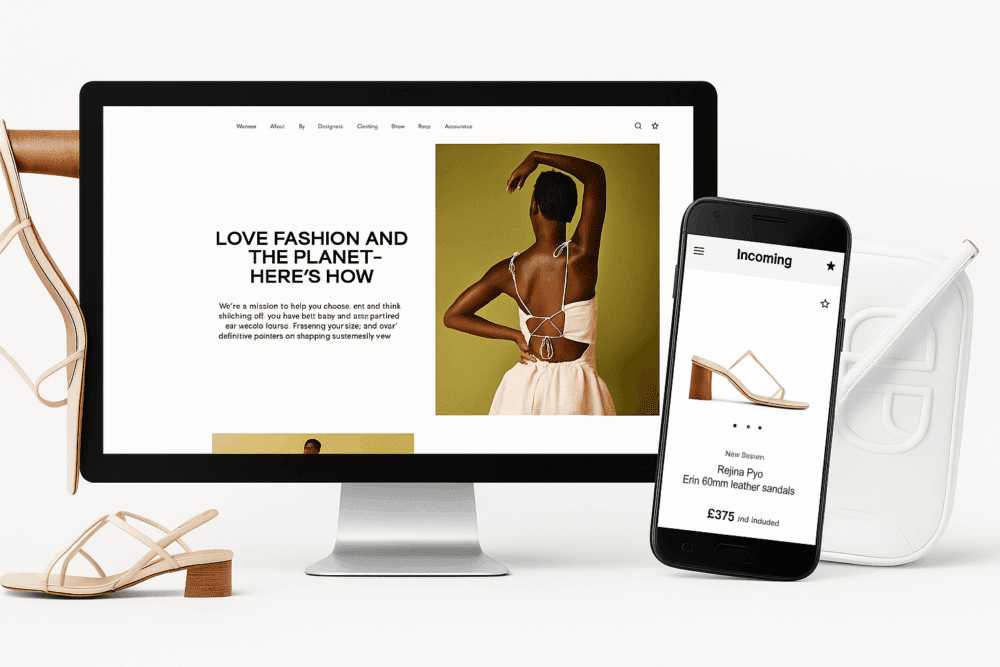Founded in 2007 by José Neves, Farfetch’s original aim was to revolutionise the e-commerce model for fashion specialty stores around the world by providing them with a global platform to sell their products. Today, Farfetch's evolution has led to the creation of three distinct business units, offering a truly unique proposition within the luxury industry. With remarkable international expansion, strategic partnerships, and notable acquisitions, such as the most recent Yoox Net-A-Porter one, the question arises: how did Farfetch ascend to become the leading global platform for the luxury fashion industry and the technological powerhouse it is today?
Farfetch was conceived by José Neves with a fundamental mission: to empower small, independent boutiques by extending their reach beyond local boundaries while preserving their physical presence. The vision was to provide a platform for boutiques lacking an online footprint, equipping them with the resources and exposure that would be otherwise unattainable as individual entities. This concept materialised in 2008 as an e-commerce marketplace exclusively for luxury boutiques in Europe, commencing with 40 boutiques.
Today, Farfetch has evolved into a multifaceted entity, encompassing marketplace, owned brands, and technology-driven prowess. Its diversified ventures include Browns, an iconic British fashion and luxury goods boutique; Stadium Goods, a sneaker and streetwear marketplace; New Guards Group, owner of international luxury brands; and Farfetch Platform Solutions, offering e-commerce and technological services for enterprise clients. Farfetch has also introduced innovative in-store technologies, such as the Farfetch Connected Retail suite, transforming the shopping experience.
Farfetch’s disruption of the luxury fashion industry to become a leading player in e-commerce has been paved by a series of funding rounds, expansive international growth, strategic partnerships, and acquisitions.
The Farfetch Business Model encompasses three key pillars: the Digital Marketplace, Farfetch Platform Solutions, and the Brand Platform. Each of these business units collaborates to enhance the Farfetch Marketplace, elevating its value and appeal for sellers and consumers alike.
The Farfetch Marketplace serves as a dynamic bridge between global buyers and sellers. Similar to a traditional marketplace, Farfetch doesn’t carry its own inventory. Nevertheless, it offers a unique approach benefiting both brand partners and customers. While multiple sellers offer the same products with individual pricing, customers receive the most competitive rates based on their locations, with import duties included where necessary. Brands can host their e-commerce stock on Farfetch, offering an additional sales channel to a large and engaged audience. Additionally, Farfetch has been known to help small brands manage cash flow, encouraging them to invest more deeply in specific styles to foster growth on the platform.
In return for these benefits, Farfetch collects a 30% commission from merchants on the total sale price, granting them access to an exclusive integrated system for inventory management, a global customer base, invaluable data insights, and cutting-edge technological tools to enhance sales. Additionally, it charges an 8% fee for fulfilment services, encompassing item delivery, return processing, and refund management.
“Building an e-commerce site is easier than it has ever been with companies like Shopify, but building a successful commercial operation is harder than it has ever been.” – José Neves, Founder
Farfetch ticks the box with an approach that mixes curation with a constant supply of revolving stock, an API-based technology that links the platform to the inventories of the partners, and the best logistics rates and service levels.
Connecting buyers and sellers without inventory ownership brings a multitude of advantages to all stakeholders involved:

Farfetch Platform Solutions is a white-label, Software as a Service (SaaS) designed for brands looking to boost audience engagement. It offers a suite of commerce solutions, including marketing, global payments, logistics, in-store technology, and inventory management, which brands can customise individually or as a bundled package for a comprehensive e-commerce experience. This gives partners access to Farfetch’s marketplace capabilities and scalability, enabling them to craft their unique online presence. Furthermore, it seamlessly integrates with the marketplace, enhancing inventory allocation, expanding marketplace offerings, and enriching the shopping experience with a wider product selection.
Farfetch has developed a collection of original-content, first-party brands, setting itself apart from traditional luxury houses like LVMH and enhancing its unique value proposition.
“Now it’s time to become culturally relevant as a brand, not just as a transactional platform.” – José Neves, Founder
By assuming control of these entities, Fartfetch has elevated its strategy, by leveraging exclusive releases and driving organic traffic and engagement to the marketplace. Additionally, it profits through the wholesale distribution of products from these brands. With Browns, it acknowledges the importance of ‘phygital’ innovative retail solutions, and ultimately, owning the New Guards Group brands and having access to exclusive sneakers or beauty products furthers Farfetch’s mission to be the global platform for luxury.
This article was published in November 2023.